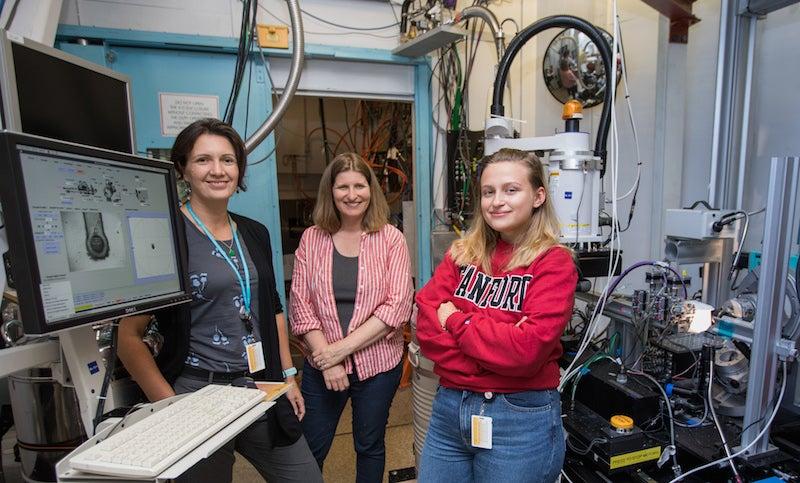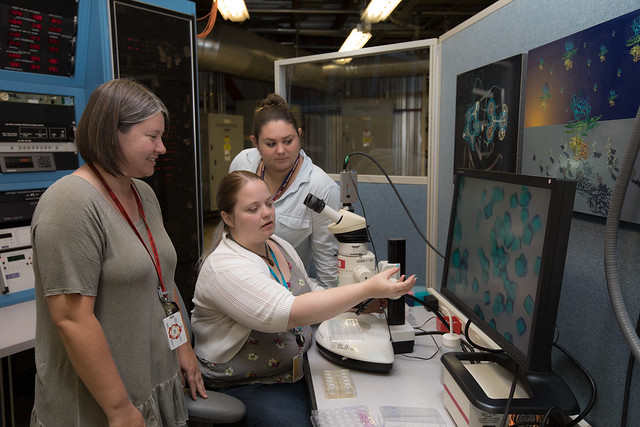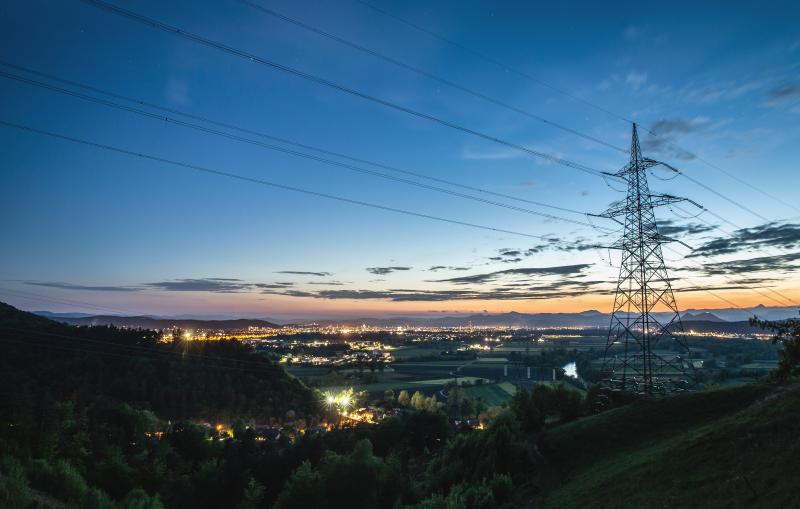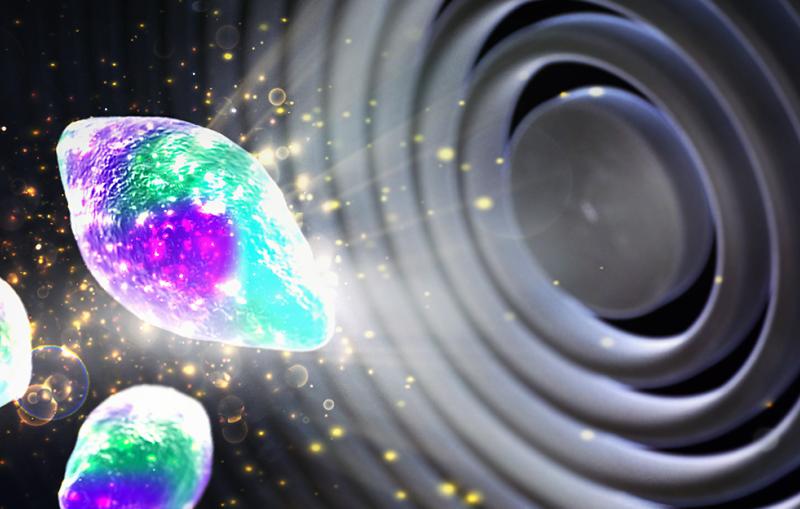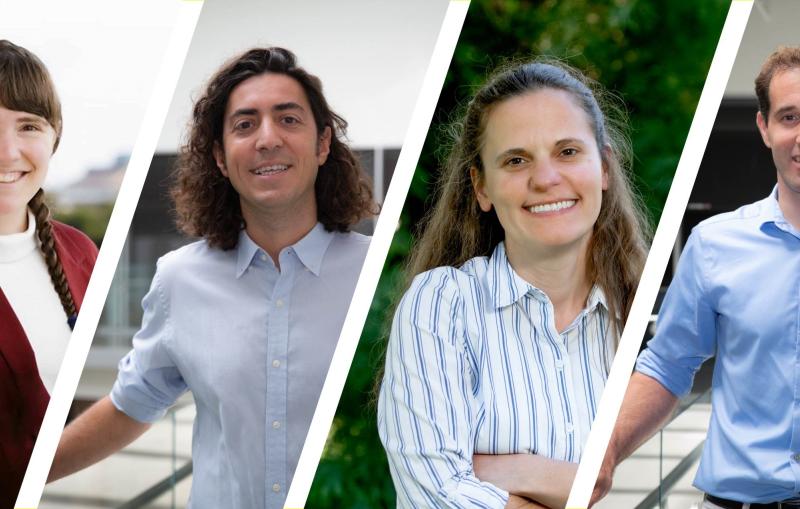From Science to Finance: SLAC Summer Interns Forge New Paths in STEM
More than 100 students worked on projects ranging from website development to imaging techniques for X-ray studies, learning new ways to apply their talents.
By Angela Anderson and Miyuki Dougherty
Internships at SLAC National Accelerator Laboratory have a way of opening surprising doors to the future.
When Agustin Pacheco, a physics major at the University of California, Berkeley, came on a tour of the Department of Energy laboratory last year, he impressed his tour guide, a SLAC scientist, by asking a lot of thoughtful questions. His inquisitiveness led to a summer internship through the Linac Coherent Light Source (LCLS) Internship Program in the field of electrical engineering, something new he was interested in exploring.
“I specifically asked for this project because I’m leaning more toward a career in engineering,” Pacheco said. “It’s something I’ve never done before, but I’m getting the right guidance and hands-on experience to smoothly transition.”
Anastasiia Makhniaieva, a rising sophomore and computer science major at Ohlone College in Fremont, encountered a few surprising ways to apply her field of study during her summer internship at SLAC’s Stanford Synchrotron Radiation Light Source (SSRL).
“I’ve never been exposed to crystallography, and never really considered anything like this work at the lab,” she said. Makhniaieva worked with her mentor Aina Cohen, a senior staff scientist, to develop and set up a video microscope for ultraviolet imaging of protein crystals at X-ray light sources like SSRL and LCLS.
“This opportunity has given me a lot of experience and new information about things I might consider in the future,” she said.
Building Bridges to the Future
This summer more than 100 interns worked on a wide variety of projects at the lab. Their activities spanned from creating a website for Business Services to designing new technologies for SLAC’s X-ray laser. Some SLAC interns worked as far away as Switzerland, where they participated in particle physics research at the Large Hadron Collider at CERN.
The students come to the lab each summer through a variety of department-hosted internships and educational outreach programs, including the DOE’s Science Undergraduate Laboratory Internships (SULI) program, which provides research experience for undergraduate students exploring careers in science, technology, engineering and mathematics, or STEM. Summer internships for high school students started at SLAC in 1969. Today, SLAC is one of 16 participating DOE laboratories in the SULI program, run by the Department’s Office of Science.
“SULI is SLAC’s longest-standing internship program and offers undergraduates a rigorous but rewarding research experience,” said Enrique Cuellar, student program manager and organizer of SLAC’s SULI internships. “Each intern is required to attend career development workshops and give a presentation on their project at the end of the summer.”
Other interns come to the lab via the DOE’s Community College Internships program, California Polytechnic State University's STEM Teacher and Researcher, and Stanford's Raising Interest in Science and Engineering programs. The LCLS Internship Program, now in its seventh year, hosted more than 40 interns in various fields of science and engineering, as well as science communications and business administration.
The professional and academic discoveries that arise through internships benefit students, mentors and the laboratory, according to Eric Shupert, SLAC manager of workforce planning and attraction.
“For the interns, working next to someone in the top tier of their field can be very impactful,” he said. “But our summer internships also give our scientists a way to share their work, give back to the community and build a strong pipeline of future employees.”
Hasan DeMirci, a research associate in the Biosciences Division who mentored several students this summer, was impressed by their tenacity.
“They’re constantly surpassing every milestone and benchmark that I can set for them,” he said. “They are fearless and come here with a fresh perspective and no expectations or limitations.”
Connecting and Exploring
Alan Fry, director of the LCLS Laser Science and Technology Division and LCLS Internship Program, emphasizes the opportunity students get to experience what it’s like to work at a national laboratory first-hand and interact with scientists, engineers and other professionals. But another crucial element is the bonds the interns form with each other, he said.
Ice cream socials, outings and barbecues offered SLAC interns across the various programs opportunities to get to know each other and share experiences and interests.
They also attended talks and presented at poster sessions at the end of the program where the top posters were recognized with awards. This year interns were invited to SLAC Association for Student Seminars summer lectures and a special one-day event hosted by the Far West Section of the American Physical Society titled “What Do Physicists do?”
Cuellar, who helps mentor and guide SULI interns and provide group programming and activities, accompanied them on tours of the lab and a trip to Lick Observatory, home of the Great Lick Refractor, at the summit of Mount Hamilton east of San Jose. The group took a private tour of the observatory and peered into the observatory’s famous telescope to view far-off nebulas and stars.
Achievements and Recognition
A SLAC internship can also yield impressive results.
SULI intern Brandon Purcell set up a working demonstration of what he called a “smart home augmented reality control system” that allows people to control their home energy use with a virtual reality-like device. Working with mentors Mayank Malik and Claudio Rivetta in SLAC’s Applied Energy Program, his goal was to build interest among funding agencies and the research community in SLAC’s Grid Integration, Systems and Mobility lab, or GISMo.
New and returning LCLS interns have published their own papers and co-authored many others. With DeMirci’s help, Yashas Rao led an experiment at SACLA, a facility similar to LCLS in Japan, this past May. Having recently graduated with a degree in biochemistry from Cal Poly, the three-time intern will join the lab as a full-time employee this fall.
“I never thought I would be working with X-ray crystallography when I started this internship – but here I am three years later, leading an experiment,” he said.
LCLS intern Katie Fotion worked on applying machine learning to a detector that measures the timing of X-rays at the free electron laser, with some promising results. The project will be extended into the fall semester.
“Not only does this approach drastically increase compute time, something much required for the launch of the LCLS-II upgrade, but it has also enhanced our overall understanding of the data,” Fotion said. “Simultaneously, we plan to turn these ideas into reality by developing the hardware for rapid analysis of incoming shots at the actual detector. I very much look forward to the opportunity to witness the end-to-end development of an entire system and the impact that it will have on the lab in the future.”
Sasha Safonova and Valerie Becker were recognized this summer with the annual Ernest Coleman Award, given since 1995 to the SULI participants nominated by fellow interns who demonstrate exemplary scholarship and citizenship.
Working in the field of astrophysics, Safonova tackled the difficult problem of simulating the pupil of the Dark Energy Spectroscopic Instrument’s (DESI) optical system. Becker analyzed recent experimental data related to high energy density studies of copper and found ways to optimize future experiments.
“Both awardees were lauded by their mentors and fellow interns for their curiosity, passion for science and leadership abilities,” Cuellar said.
More information about internships at SLAC can be found on the Careers at SLAC webpage and the LCLS Internship Program webpage.
SLAC is a multi-program laboratory exploring frontier questions in photon science, astrophysics, particle physics and accelerator research. Located in Menlo Park, California, SLAC is operated by Stanford University for the U.S. Department of Energy Office of Science. To learn more, please visit www.slac.stanford.edu.
SLAC National Accelerator Laboratory is supported by the Office of Science of the U.S. Department of Energy. The Office of Science is the single largest supporter of basic research in the physical sciences in the United States, and is working to address some of the most pressing challenges of our time. For more information, please visit science.energy.gov.
